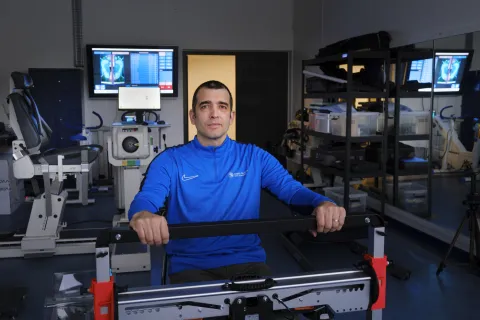
"We are now on equal footing with sports clubs and institutes worldwide, such as English premier league teams like Manchester United, Manchester City, Liverpool and Chelsea. NBA-teams are also using these tools, as is the English Institute of Sport," says Milos Petrovic, assistant professor at School of Education’s Faculty of Health Promotion, Sport and Leisure Studies. Milos has with his colleagues worked on developing a new Research centre for sport and health sciences at the University of Iceland stationed in Laugardalshöll. Milos knows what he is talking about having previously worked with the champions of both Europe and the UK; Manchester City and helped one of the best golfers in the world improve their swing. Milos is here discussing the possibilities of measurements in diverse sports in a new research centre, his life in Iceland, and the success of Serbia in sports.
We met Milos on the second floor of Laugardalshöll where excellent facilities for sports measurements have been built. "The Sport and Health Sciences programme recently received a 14 million ISK grant from the University's Equipment Purchasing Fund and decided to buy this equipment. This is the latest gear to measure people’s physical activity. Technology and sports sciences meet here as we are in fact using technology to improve physical activities of athletes and the general public in sports. We can measure all kinds of movements and performance in sports, such as jumping, throwing, running or strength in all parts of the muscles," explains Milos.
Research linked to both sports and public health
When asked Milos says that the equipment has a threefold purpose. "First of all, we are going to work with athletes, any athletes, be it high-level sports, amateur or recreational," says Milos.
Secondly the work revolves around children and their development. "We can study whether they are developing in the same way as other children in the world; whether they are ahead or lag behind, if they have any musculoskeletal disorders, how they jump, and how fast they run," explains Milos.





